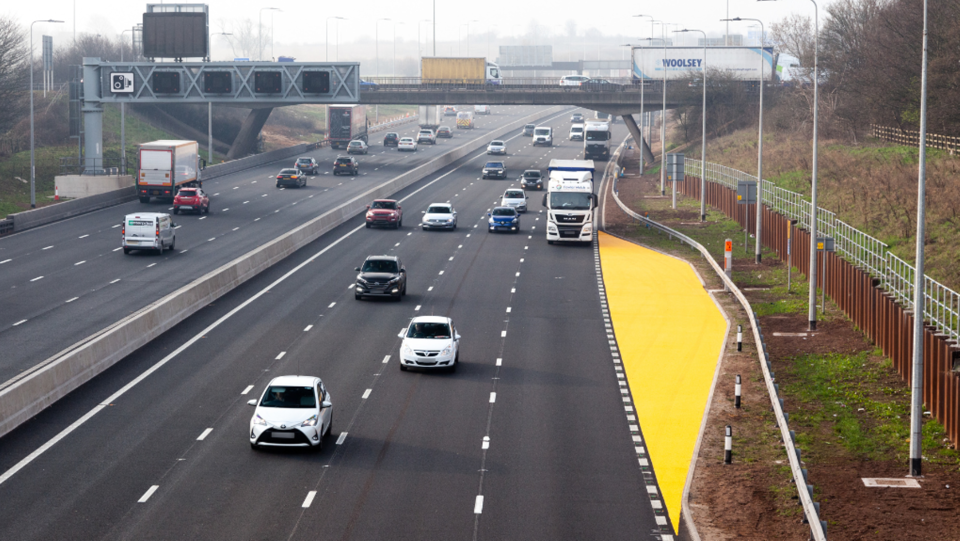A further 11 sections of smart motorway will be upgraded with extra places to stop in an emergency, National Highways has announced.
Government cancelled plans for any new smart motorways, citing cost pressures and the lack of confidence felt by some drivers, earlier this year.
It also promised to build more than 150 additional emergency areas on all lane running (ALR) motorways across the country by 2025, part of a £900 million investment in further safety improvements on existing smart motorways.
In a new progress report, published by National Highways, it reveals that an additional five emergency areas have already been added on the M6 in Staffordshire and a further eight on the M1 in Bedfordshire and Northamptonshire.
In June, work also began on more than doubling the number of emergency areas on the M1 in South Yorkshire between junctions 32 and 35a.
Now, a further 11 locations have been announced for additional emergency areas on the M1, M3, M4, M5, M6, M20, M25 and M27.
National Highways chief executive, Nick Harris, said: “Safety is our highest priority and we are committed to further improving all lane running motorways.
“We have completed key upgrades to improve the performance of technology to detect stopped vehicles, and today we have set out the next sections of motorway to benefit from the programme to install more than 150 extra emergency areas to give drivers added reassurance.”
Its ‘Smart motorways stocktake third year progress report’ confirms it has now delivered all the actions set out in the March 2020 Smart Motorway Safety Evidence and Action Plan due to have been completed by this point.
This includes achieving the national average 10-minute attendance time for traffic officers on ALR motorways where emergency areas are more than a mile apart.
The report includes the safety evidence (2017 to 2021), which it says continues to show that overall, all three types of smart motorway are safer than conventional motorways in terms of deaths or serious injuries.
National Highways has also published scheme by scheme data, showing how safety compares on smart motorway sections before and after they were upgraded.
In addition to the stocktake actions, National Highways is also investing £105m to further improve operational technology on ALR smart motorways.
Key upgrades to improve the performance of technology to detect stopped vehicles on motorways without a permanent hard shoulder have already been completed.
Edmund King, AA president, said: “We applaud National Highways for making good progress in implementing and improving the performance of stopped vehicle detection and other safety measures on smart motorways following serious concerns raised by the AA and others.
“The fundamental problem remains that stopped vehicle incidents are more frequent on all lane running (ALR) ‘smart’ motorways compared to motorways with hard shoulders.
“To address this, the hard shoulder needs to be reinstated or at the very least the number of emergency areas needs to be radically increased.
“The prospect of breaking down or stopping in a live lane is daunting as our AA call centre operators who take the distressed calls can confirm.
“The advice remains that if you breakdown in a live lane and can’t exit the vehicle safely via the passenger seat, you should keep your seat belt on, put on hazard lights and other lights and dial 999. It is an emergency.”
King added: “We welcomed the scrapping of new smart motorways but even with the progress made with new technology on existing ones, more needs to be done to reduce the dangers of live lane stops.
“We have called for more ‘controlled motorways’ which the report shows have lower killed or serious injury rates than all lane running (1.31 compared to 1.43). These motorways have the benefit of smart motorway technology whilst also having a hard shoulder.”





















Login to comment
Comments
No comments have been made yet.